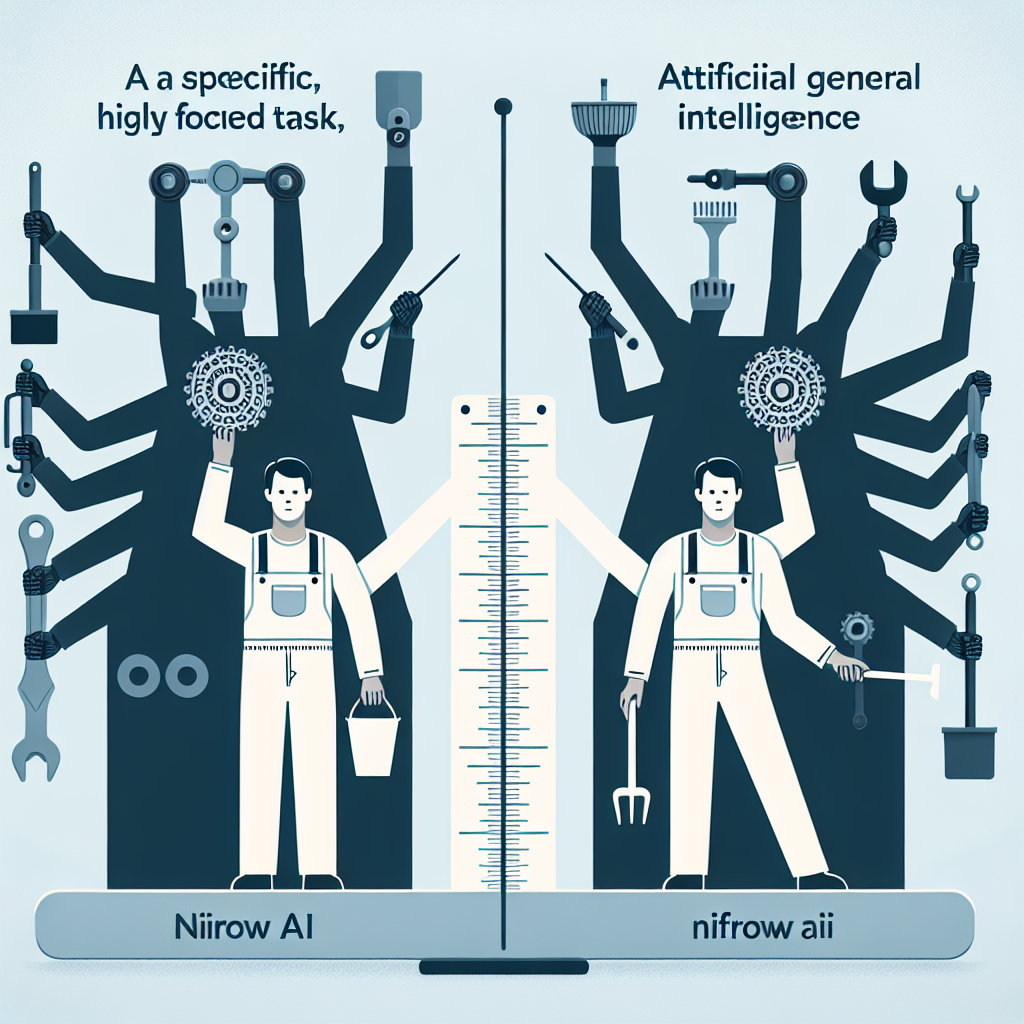Artificial Intelligence (AI) has become a widely discussed topic in recent years, with the development of various AI technologies changing the way we live and work. One of the key distinctions within AI is between Narrow AI and Artificial General Intelligence (AGI). While both are forms of AI, they differ in terms of their capabilities and potential impact on society. In this article, we will explore the differences and similarities between AGI and Narrow AI, and discuss their implications for the future.
Narrow AI, also known as Weak AI, refers to AI systems that are designed for a specific task or set of tasks. These systems are highly specialized and excel at performing a single task, such as image recognition, speech recognition, or playing chess. Narrow AI operates within a limited domain and does not possess the ability to generalize its knowledge or learn new tasks outside of its designated area.
On the other hand, AGI, also known as Strong AI, refers to AI systems that have the ability to perform any intellectual task that a human can do. AGI aims to replicate the cognitive abilities of humans, including reasoning, problem-solving, and learning. AGI systems are designed to adapt to new situations, learn from experience, and apply their knowledge across a wide range of tasks and domains.
One of the key differences between AGI and Narrow AI is their level of intelligence and adaptability. While Narrow AI systems are highly specialized and perform well within their designated tasks, they lack the flexibility and generalization capabilities of AGI. AGI, on the other hand, is designed to mimic human intelligence and can perform a wide range of tasks with the same level of proficiency.
Another key difference between AGI and Narrow AI is their potential impact on society. Narrow AI systems are already widely used in various industries, such as healthcare, finance, and transportation, to automate tasks and improve efficiency. However, the deployment of AGI systems could have far-reaching implications for society, as they have the potential to outperform humans in many intellectual tasks and potentially replace human workers in various industries.
Despite their differences, AGI and Narrow AI share some similarities in terms of their underlying technology and development process. Both types of AI rely on machine learning algorithms, such as neural networks and deep learning, to process and analyze data and make decisions. Additionally, both AGI and Narrow AI require vast amounts of data to train their algorithms and improve their performance over time.
In terms of the development process, AGI is often seen as a long-term goal of AI research, with many researchers and experts debating whether it is even achievable. Narrow AI, on the other hand, is already being widely deployed in various industries and applications, with continuous advancements in AI technology driving its growth and development.
FAQs:
Q: Can Narrow AI evolve into AGI over time?
A: While Narrow AI systems can be improved and expanded to perform a wider range of tasks, they are unlikely to evolve into AGI on their own. AGI requires a fundamentally different approach to AI development, focusing on creating systems that can learn and adapt to new tasks and environments.
Q: What are the ethical implications of AGI?
A: The development of AGI raises numerous ethical concerns, including the potential impact on the job market, the risk of bias and discrimination in AI systems, and the potential for AGI to surpass human intelligence and control. As such, it is important for researchers and policymakers to consider the ethical implications of AGI development and implementation.
Q: How close are we to achieving AGI?
A: While significant advancements have been made in AI research in recent years, achieving AGI remains a long-term goal that is still far from being realized. Researchers continue to work on developing AI systems that can replicate human intelligence, but many challenges and obstacles remain to be overcome.
In conclusion, AGI and Narrow AI represent two distinct approaches to AI development, with different capabilities and implications for society. While Narrow AI systems are already widely deployed and used in various industries, AGI remains a long-term goal of AI research, with many challenges and uncertainties surrounding its development. By understanding the differences and similarities between AGI and Narrow AI, we can better appreciate the potential impact of AI on society and prepare for the future of artificial intelligence.

